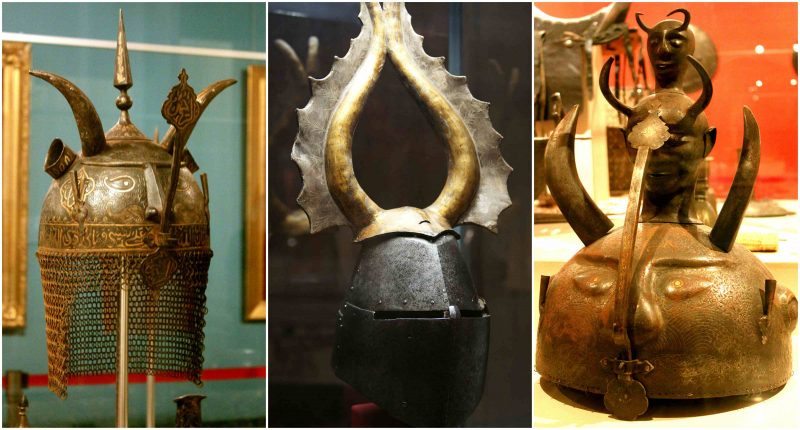Horned helmets were worn by many people around the world, but not, contrary to the modern myth, the Vikings.
Helments mounted with animal horns or replicas were also worn, as in the Mesolithic Star Carr. These were probably used for religious ceremonial or ritual purposes. Much of the evidence for these helmets and headpieces comes from depictions rather than the items themselves.
Two bronze statuettes dated to the early 12th century BC, the so-called “horned god” and “ingot god”, depicting deities wearing horned helmets, found in Enkomi, Cyprus. In Sardinia dozens of warriors with horned helmets are depicted in bronze figures and in the monte prama gigantic statues, similar to those of the Shardana warriors (and possibly belonging to the same people) depicted by the Egyptians.
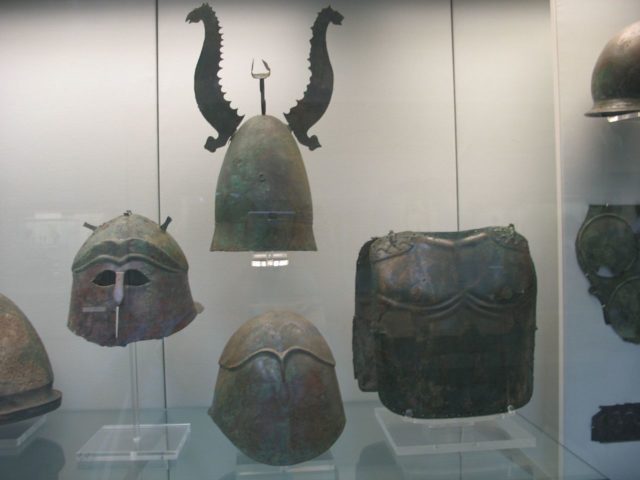
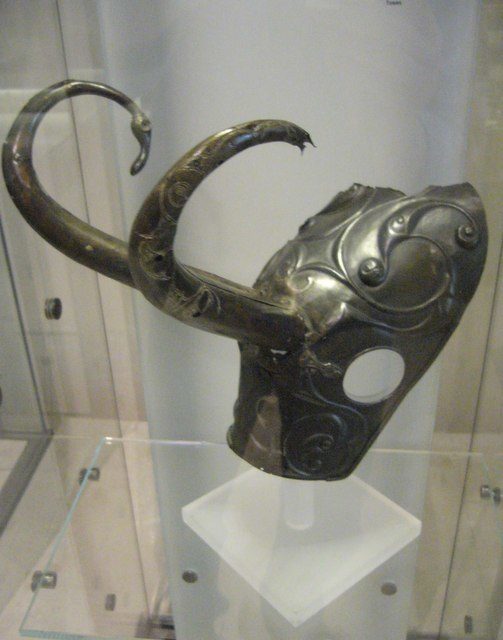
A pair of bronze horned helmets from the later Bronze Age (dating to ca. 1100–900 BC) were found near Veksø, Denmark in 1942. Another early find is theGrevensvænge hoard from Zealand, Denmark (ca. 800–500 BC, now partially lost).
The Waterloo Helmet, a Celtic bronze ceremonial helmet with repoussé decoration in the La Tène style, dating to ca. 150–50 BC, was found in the River Thames, at London. Its abstracted ‘horns’, different from those of the earlier finds, are straight and conical.
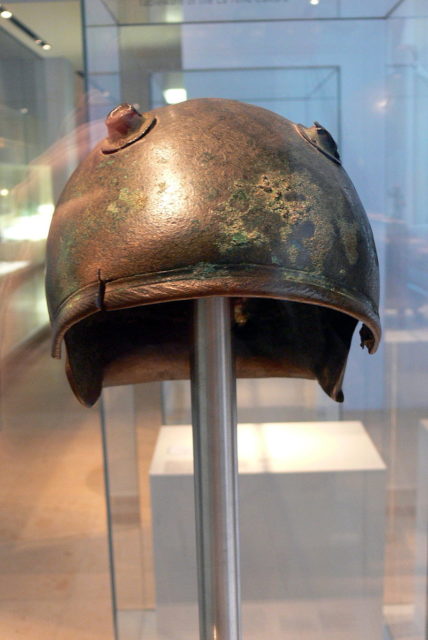
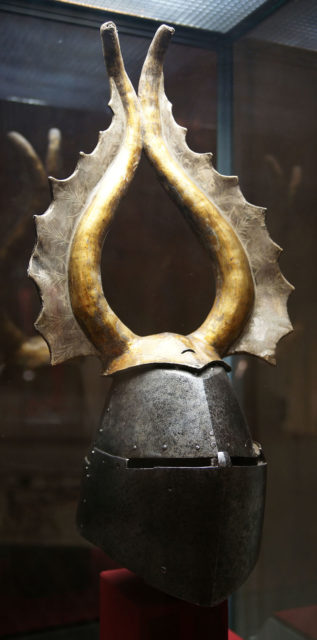
Late Gaulish helmets (ca. 55 BC) with small horns and adorned with wheels, reminiscent of the combination of a horned helmet and a wheel on plate C of the Gundestrup cauldron (ca. 100 BC), were found inOrange, France. Other Celtic helmets, especially from Eastern Europe, had bird crests. The enigmatic Torrs Pony-cap and Horns from Scotland appears to be a horned champron to be worn by a horse.
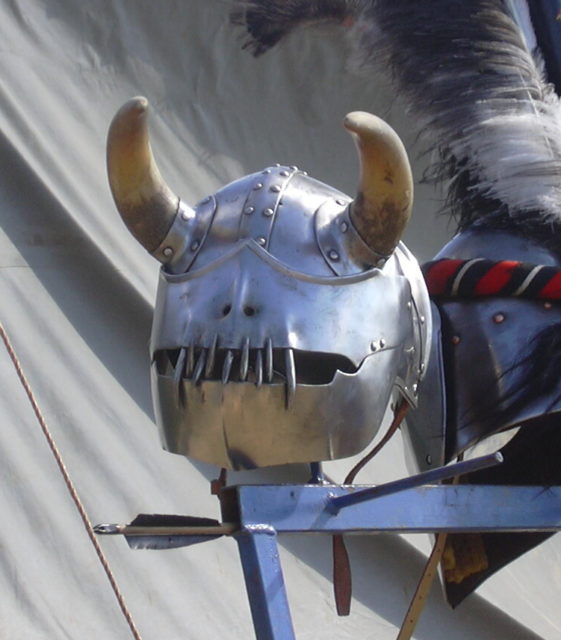
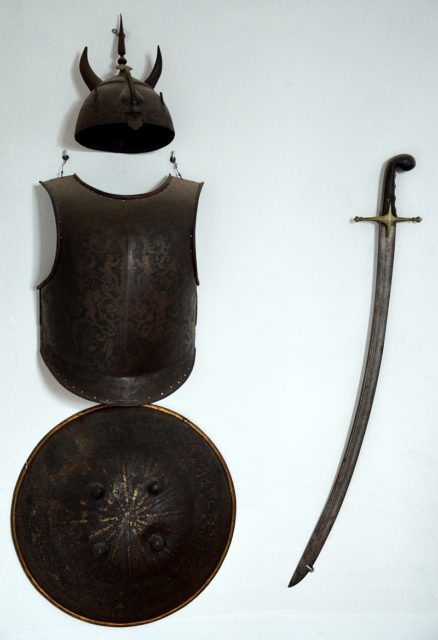
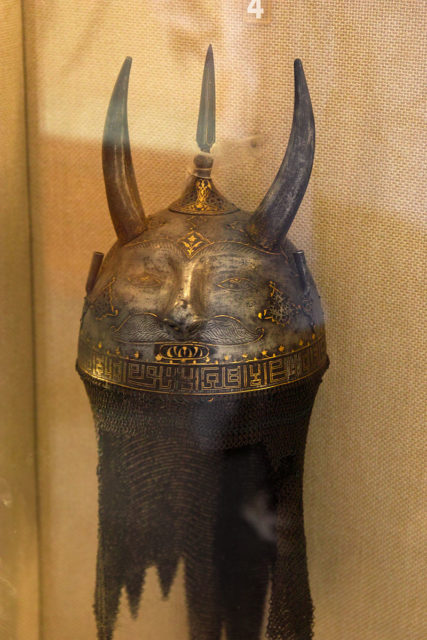
Depicted on the Arch of Constantine, dedicated in 315 AD, are Germanic soldiers, sometimes identified as “Cornuti”, shown wearing horned helmets. On the relief representing the Battle of Verona (312) they are in the first lines, and they are depicted fighting with the bowmen in the relief of the Battle of the Milvian Bridge.
In pre-Meiji Restoration Japan, some Samurai armor incorporated a horned, plumed or crested helmet. These horns, used to identify military commanders on the battlefield, could be cast from metal, or made from genuine water buffalo horns.
Indo-Persian warriors often wore horned or spiked helmets in battle to intimidate their enemies. These conical “devil masks” were made from plated mail, and usually had eyes engraved on them.
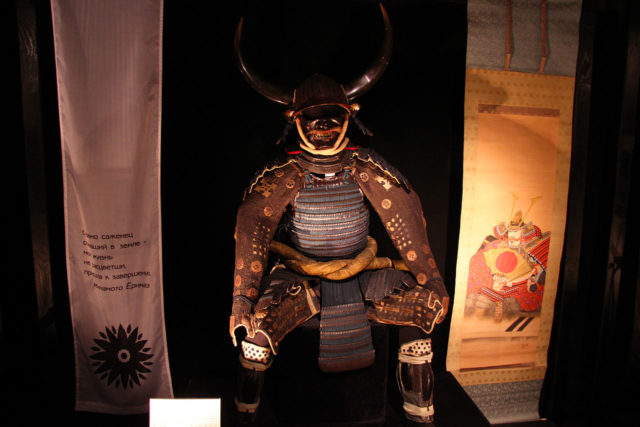
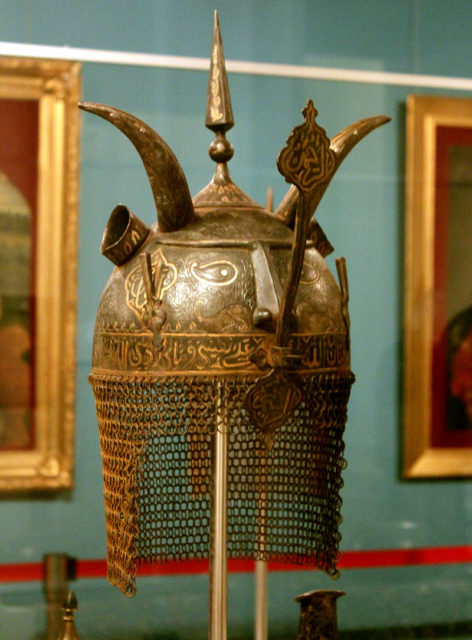
A depiction on a Migration Period (5th century) metal die from Öland, Sweden, shows a warrior with a helmet adorned with two snakes or dragons, arranged in a manner similar to horns. Decorative plates of the Sutton Hoo helmet (ca. 600 AD) depict spear-carrying dancing men wearing horned helmets. A diebolt for striking plaques of this kind was found at Torslunda, Sweden.
An engraved belt-buckle found in a 7th-century grave at Finglesham, Kent in 1965 bears the image of a naked warrior standing between two spears wearing a belt and a horned helmet; a case has been made that the much-repaired chalk figurecalled the “Long Man of Wilmington”, East Sussex, repeats this iconic motif, and originally wore a similar cap, of which only the drooping lines of the neckguard remain. This headgear, of which only depictions have survived, seems to have mostly fallen out of use with the end of the Migration period.
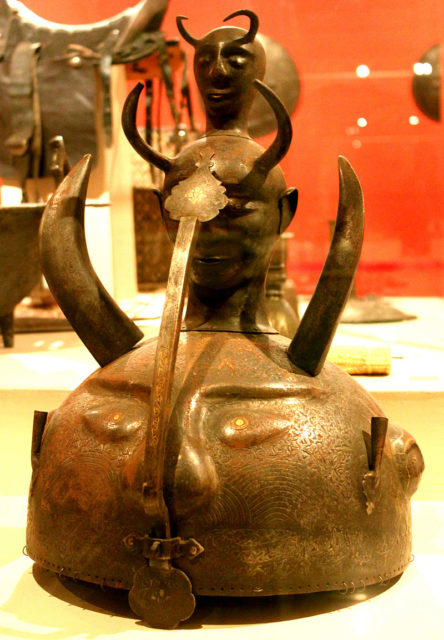
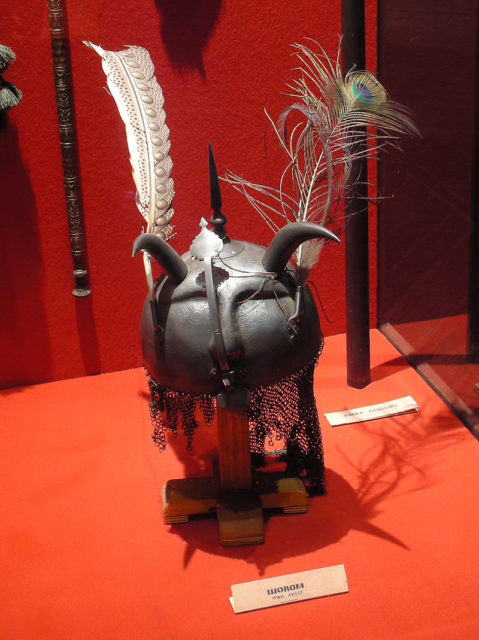
During the High Middle Ages, fantastical headgear became popular among knights, in particular for tournaments.The achievements or representations of somecoats of arms, for example that of Lazar Hrebeljanovic, depict them, but they rarely appear as charges depicted within the arms themselves. It is sometimes argued that helmets with large protuberances would not have been worn in battle due to the impediment to their wearer. However, impractical adornments have been worn on battlefields throughout history.
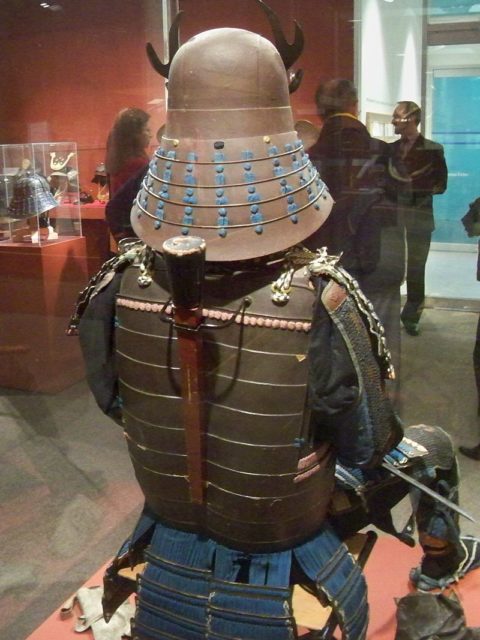
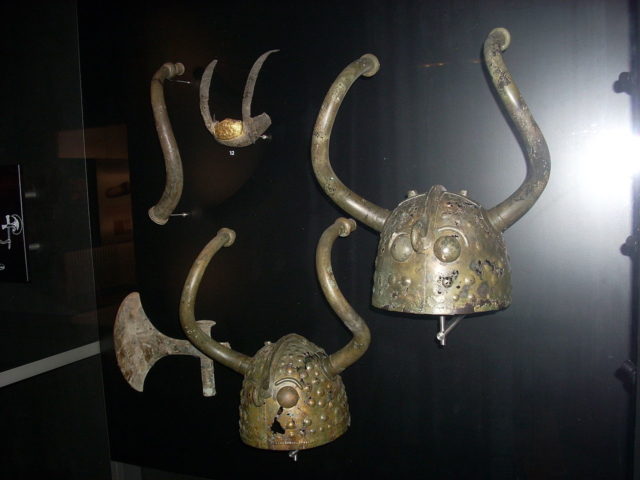
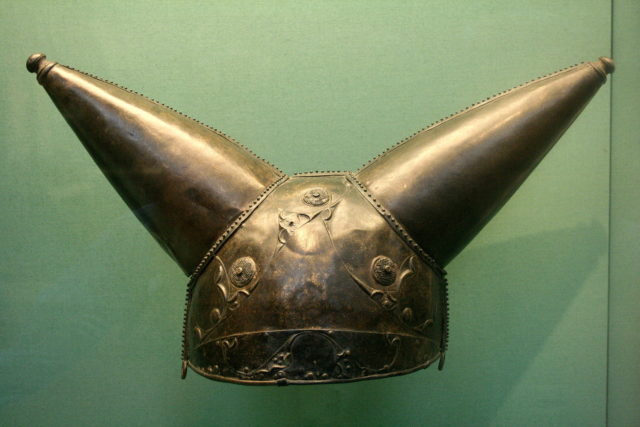
Popular culture has come to associate horned helmets strongly with Viking warriors. However, there is no evidence that the Vikings wore them.
The depiction of Vikings in horned helmets was an invention of 19th-century Romanticism. In 1876 Carl Emil Doepler created horned helmets for the first Bayreuth Festival production of Wagner’s Der Ring des Nibelungen and has been credited with inspiring this.
